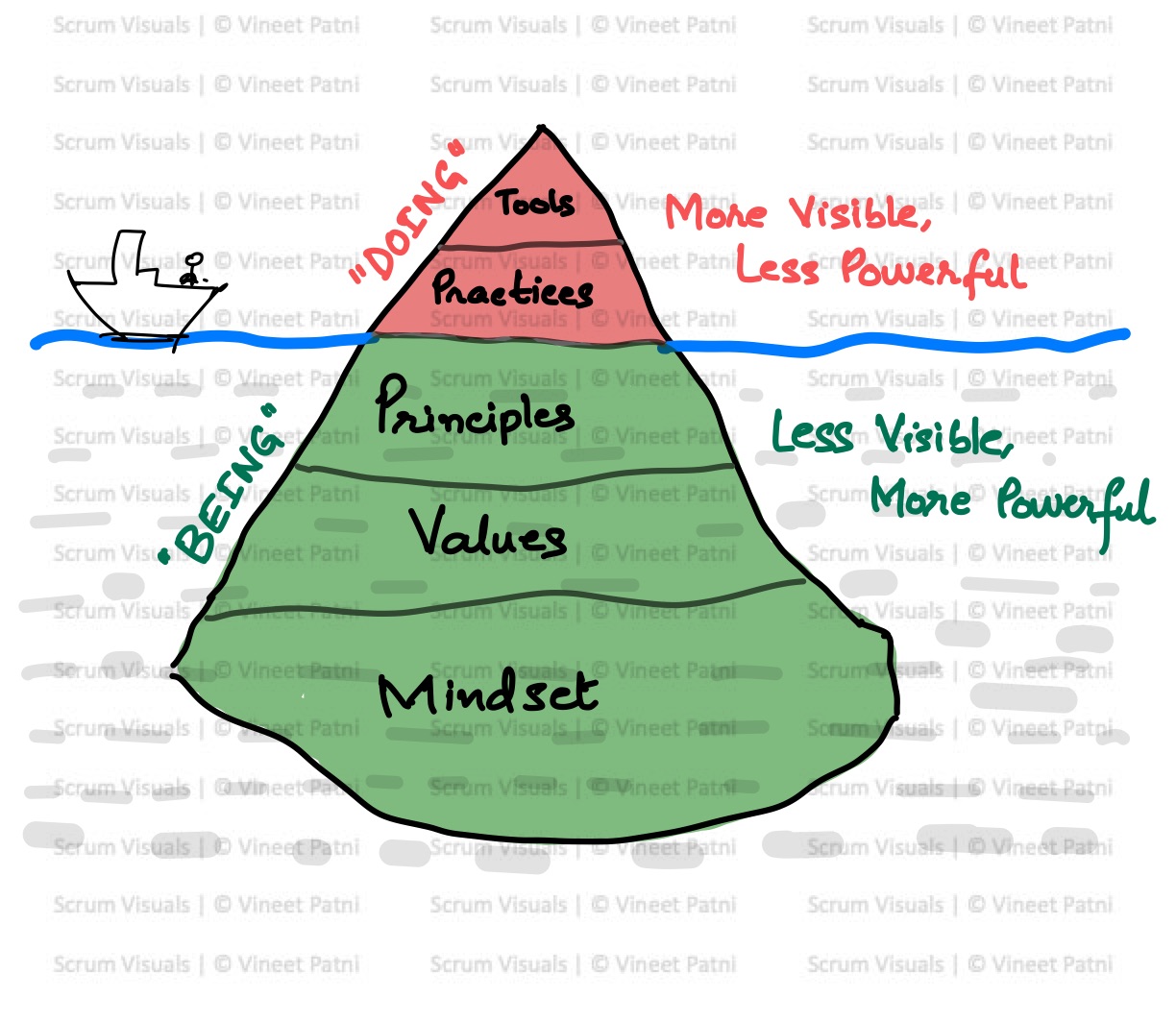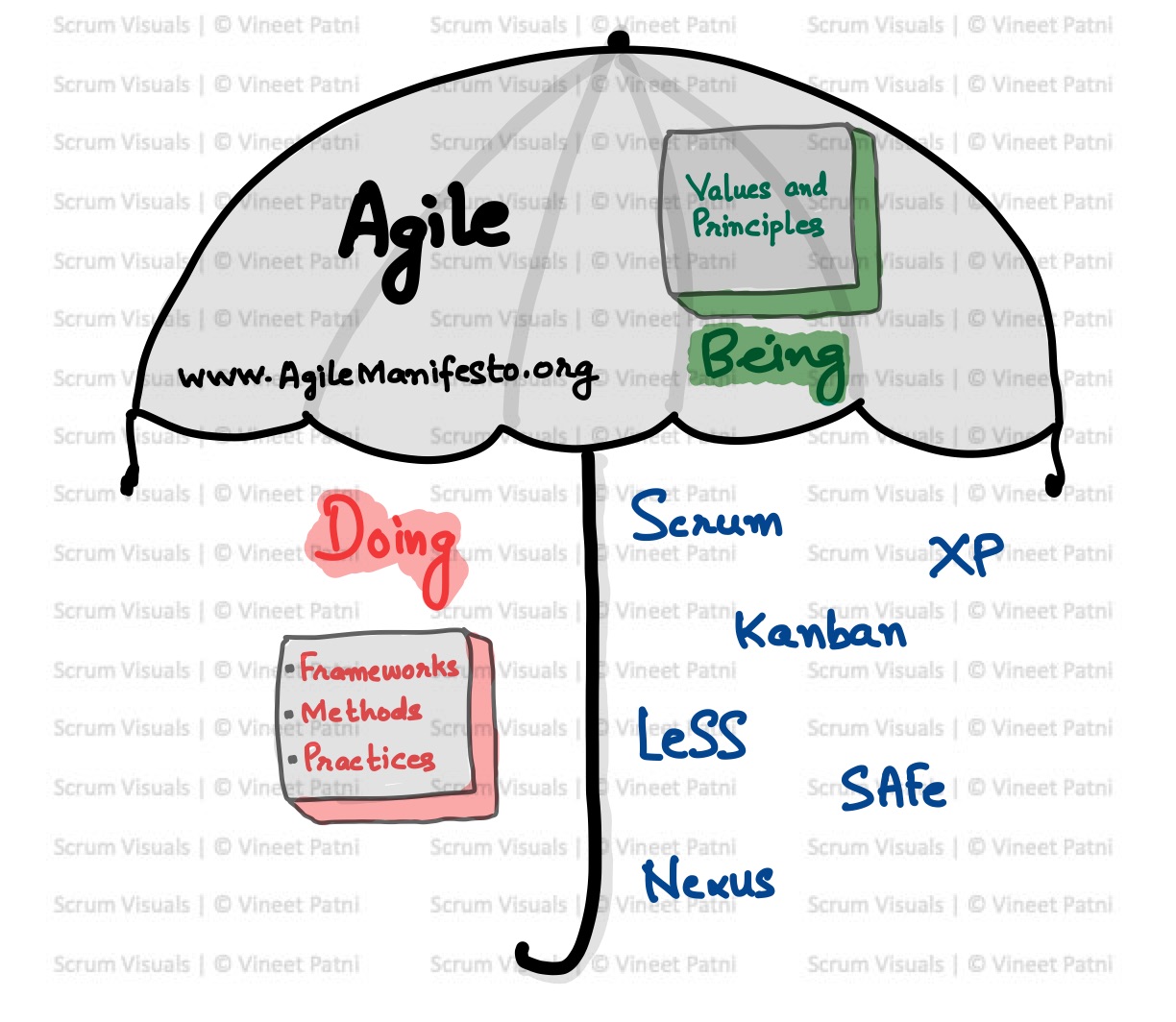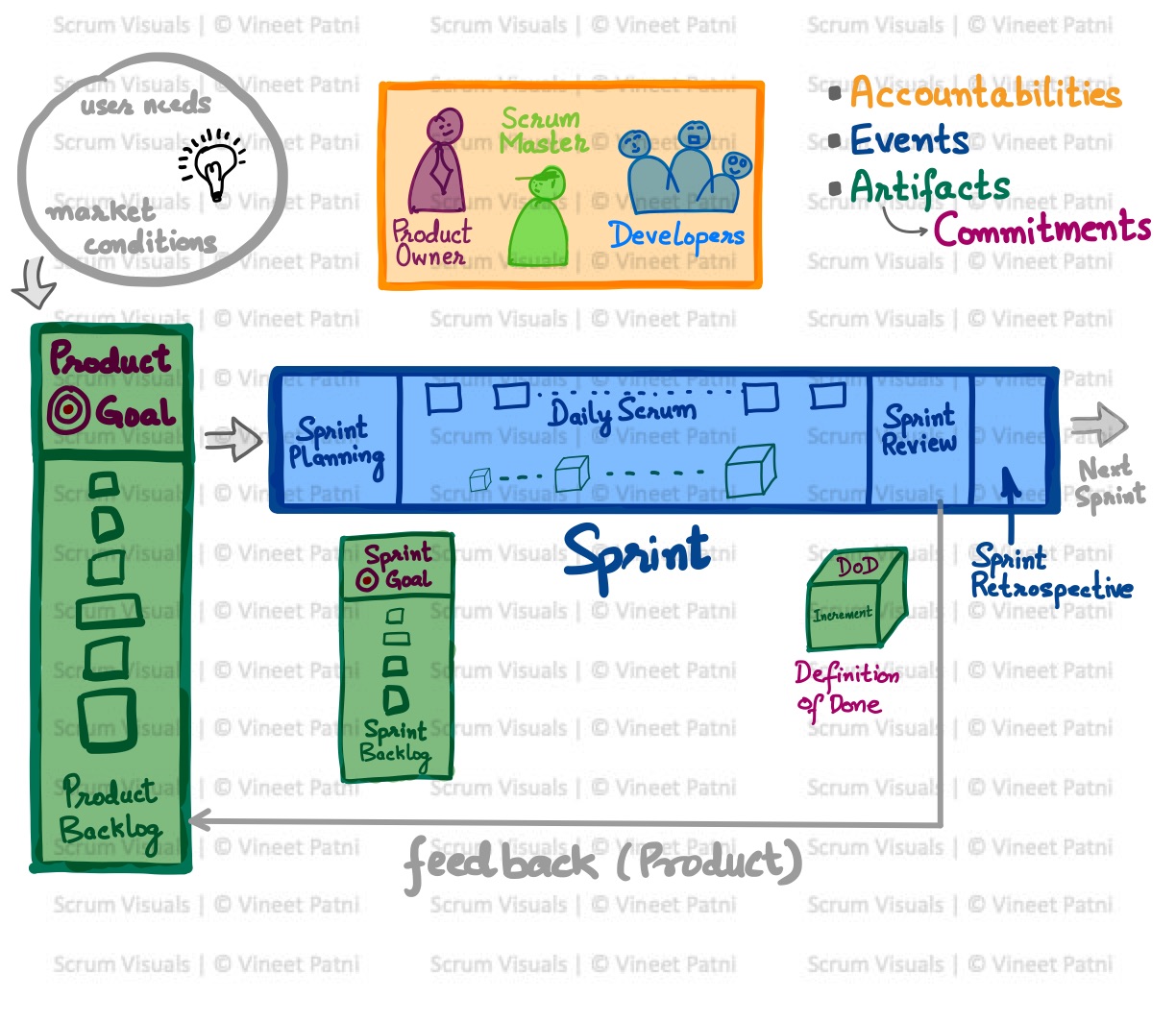Introduction:
Developers in a Scrum team are the backbone of innovation and product development. Their expertise, creativity, and dedication drive the team’s success. Within the Scrum framework, developers play a pivotal role in delivering high-quality products that meet customer needs.
Scrum Events: an overview
The aim of Scrum events should always be to enhance collaboration and transparency and to provoke some change through inspection and adaptation.
- Sprint: Sprint involves all other events. Hence, it is referred to as a container event.
- Sprint Planning: Occurs at the beginning of each sprint to forecast and plan the work for the sprint.
- Daily Scrum: This happens daily to synchronize activities and readjust the plan to achieve the sprint goal better.
- Sprint Review: Held at the end of the sprint to review the increments and gather feedback.
- Sprint Retrospective: Conducted after the Sprint Review to reflect on the process and identify improvements.
Order of Scrum Events:
~ Sprint Planning
~ Daily Scrum
~ Sprint Review
~ Sprint Retrospective
Duration of Scrum Events:
~ Sprint Planning: Typically 4–8 hours for a monthly sprint.
~ Daily Scrum: Timeboxed to 15 minutes daily to maintain focus and efficiency.
~ Sprint Review: Around 4 hours for a one-month Sprint.
~ Sprint Retrospective: Usually 3 hours for a monthly sprint.
The Scrum Team and Developer’s Role:
The Scrum team comprises various roles, including product owners, Scrum masters, and developers. Though explicitly focused on implementation, developers actively contribute to all aspects of product development, ensuring that the product meets both customer expectations and technical standards.
Understanding Developers in a Scrum Team:
Developers are the skilled individuals responsible for turning ideas into value in the form of products. They possess the technical expertise and problem-solving abilities crucial for product development.
Cruciality of Developers to the Scrum Team:
Developers are integral to the Scrum team’s success. They bring technical insights, creative solutions, and an understanding of the end users’ needs, ensuring that the product aligns with business objectives and technical feasibility.
Daily Scrum: Not Just a Status Update Meeting
Contrary to common misconceptions, the Daily Scrum isn’t merely a status update session. It’s a vital opportunity for the developers to sync up their work, collaborate on tasks, and address any potential roadblocks.
Daily Standup vs. Daily Scrum:
“Daily Standup” and “Daily Scrum” are often used interchangeably but entail distinct concepts.
- The Daily Standup is a brief meeting where team members stand and discuss work status. In contrast, the Daily Scrum is a specific event in Scrum purposefully focused on synchronizing and realigning all the developers, identifying potential impediments, and making planning adjustments.
- The developers can use the daily stand-up technique for their daily scrum.
Scrum: Unveiling and Addressing Challenges:
~ Scrum doesn’t magically solve problems; instead, it exposes existing issues.
~ Developers with the entire Scrum team acknowledge that through continuous improvement and feedback loops, they can identify and rectify challenges promptly, ensuring the product’s alignment with customer needs.
Time-Boxed Event:
Conduct the Daily Scrum as a time-boxed event, ideally lasting 15 minutes.
Ensure all team members are present and focused during this time.
Frequency:
Schedule the Daily Scrum at the same time and place every day to establish a routine.
It should happen at a time that is convenient for the Developers.
Facilitation:
The Scrum Master facilitates the Daily Scrum but doesn’t lead it.
Encourage team members to address each other, not just the Scrum Master.
Three Questions:
Stick to the three standard questions: What did you do yesterday? What will you do today? Are there any impediments in your way?
Emphasize brevity and focus on actionable items.
Progress Towards the Sprint Goal:
Keep the conversation centered around the Sprint Goal.
Discuss how completed work contributes to the goal and adjust plans if necessary.
Inspection and Adaptation:
Use the Daily Scrum as an opportunity to inspect progress towards the Sprint Goal and adapt the Sprint Backlog as needed.
Identify any deviations from the plan and strategize on how to get back on track.
Empower your skillset and become a Scrum Master:
Leap mastering Scrum by enrolling in a Certified Scrum Master course by Scrum Alliance, led by renowned Certified Scrum Trainer Vineet Patni at ScaleUp Consultants.
Certified Scrum Master certification enables you to serve teams and guide them towards efficiently building a better product.
Embrace the power of Scrum to elevate your team’s collaboration and product delivery!
Conclusion:
Developers are the heart of a Scrum team, driving innovation and delivering value to customers. Understanding the nuances of the Daily Scrum and its distinction from the Daily Standup empowers developers to leverage this essential event effectively.
Embracing the Scrum framework fosters continuous improvement and ensures the team remains aligned toward building products that exceed expectations.
Launch your Agile career with scrum master certification











